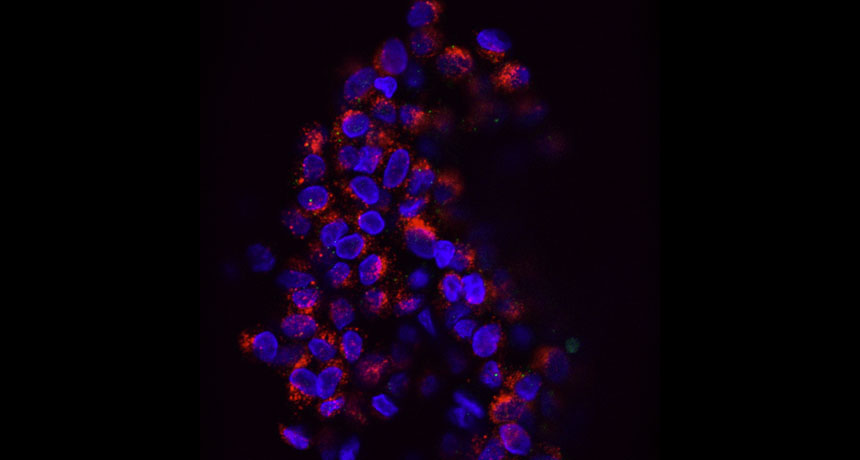Breast cancer cells spread in an already-armed mob

COLD SPRING HARBOR, N.Y. — When breast cancer spreads, it moves in gangs of ready-to-rumble tumor cells, a small genetic study suggests. Most of the mutations that drive recurrent tumors when they pop up elsewhere in the body were present in the original tumor, geneticist Elaine Mardis reported May 9 at the Biology of Genomes meeting.
For many types of cancer, it is the spread, or metastasis, of tumor cells that kills people. Because cancer that comes back and spreads after initial treatment is often deadlier than the original tumors, researchers thought most of the mutations in recurrent tumors happened after they spread. But the new findings contradict this assumption and may indicate ways to stop metastasis.
Mardis, of Nationwide Children’s Hospital in Columbus, Ohio, and colleagues collected recurrent breast tumors from 16 women who died after their cancer had spread to other parts of the body. Comparing the metastasized tumors with the original breast tumors, the researchers were surprised to learn that multiple, slightly genetically different cells from the original site had broken away together and established the new tumors.
Researchers used to think cancer spread when single cells slipped away and set up shop elsewhere. But recent research in mice suggested cancer cells migrate in groups (SN: 1/10/15, p. 9). The new study doesn’t provide direct evidence of this group migration in human cancer. But genetic similarities between metastasized and original tumors suggest that multiple cells move together to remote sites.
Only two women in the study had cancer-driving mutations — both in an estrogen receptor gene called ESR1 — in their recurrent tumors not seen in the original. All of the tumors that metastasized contained mutations in the TP53 gene. Such mutations could be a warning sign that a breast cancer is prone to spread, Mardis said.